Steel Products Prices North America
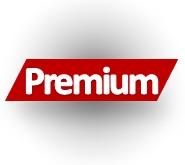
Raw Materials Prices: Iron Ore, Coking Coal, Pig Iron, Scrap, Zinc
Written by Peter Wright
February 26, 2020
Raw materials prices have been negatively impacted by the coronavirus outbreak in China.
Table 1 summarizes the price changes through Feb. 19 of the five materials considered in this analysis. It reports the month/month, 3 months/3 months and 12 months/12 months changes on a percentage basis. In the last 30 days, the prices of iron ore, scrap and zinc declined. Coking coal increased slightly and pig iron from Brazil advanced by 3.2 percent. This was a deterioration from our January update when all five materials had a positive price movement in one month and three months for the first time since we began this analysis in October 2018.
On Feb. 16, Mining.com reported: “Prices for copper, aluminum, iron ore and zinc meaningfully declined after the COVID-19 outbreak due to the possible effect on Chinese demand.”
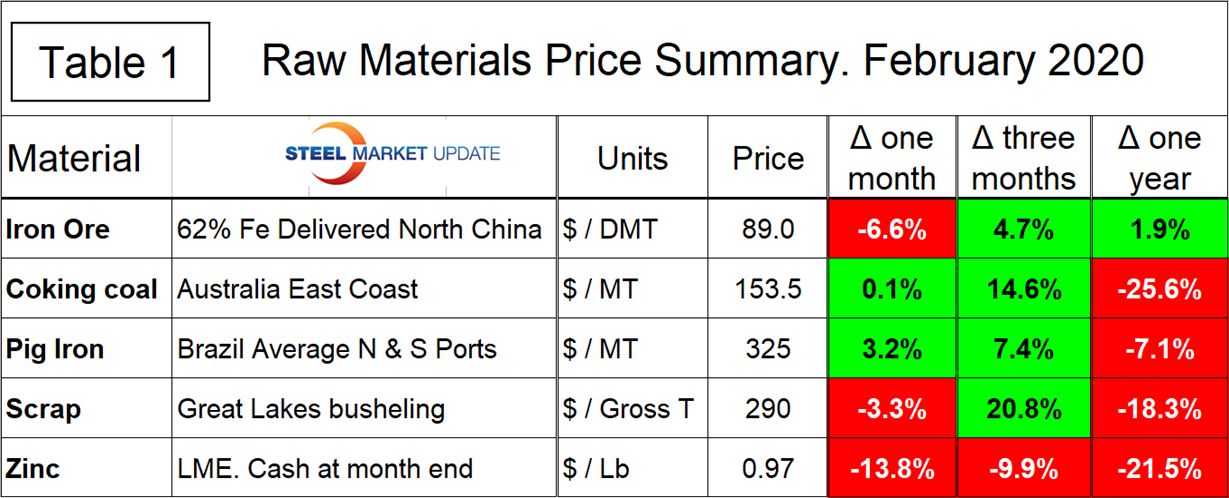
Iron Ore
The Chinese import price of 62% Fe content ore fines declined to $89.00/dmt from $95.30 a month ago. Figure 1 shows the price of 62% Fe delivered North China since January 2009. The price since January 2019 has stayed above the range that pertained for the previous year and a half.
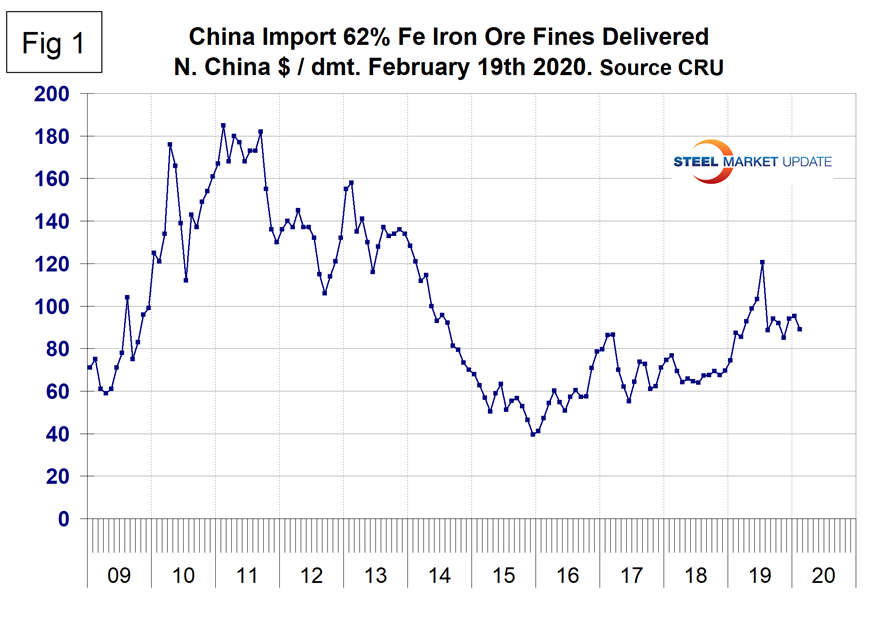
Coking Coal
The price of premium low volatile coking coal FOB east coast of Australia increased by two cents per metric ton in February to $153.50, its highest level since last August (Figure 2).
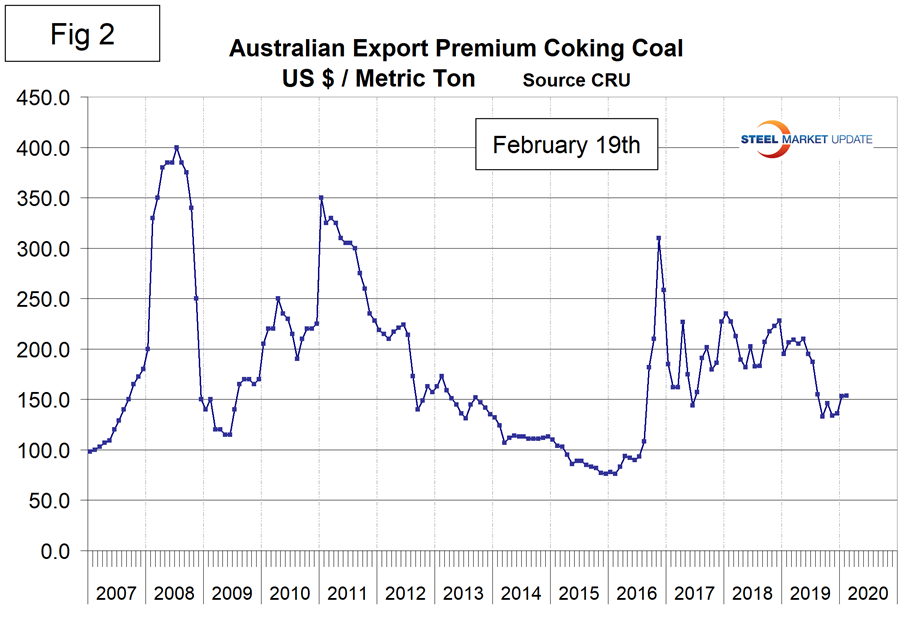
Pig Iron
Most of the pig iron imported to the U.S. currently comes from Russia, Ukraine and Brazil with additional material from South Africa and Latvia. In this report, we summarize prices out of Brazil and average the FOB value from the north and south ports. The price had a recent peak of $400 per metric ton in May and June 2018 before declining erratically through November 2019. There was a $22.50 recovery in December through February. The average price in February was $325 per metric ton, 7.1 percent lower than in February last year (Figure 3).
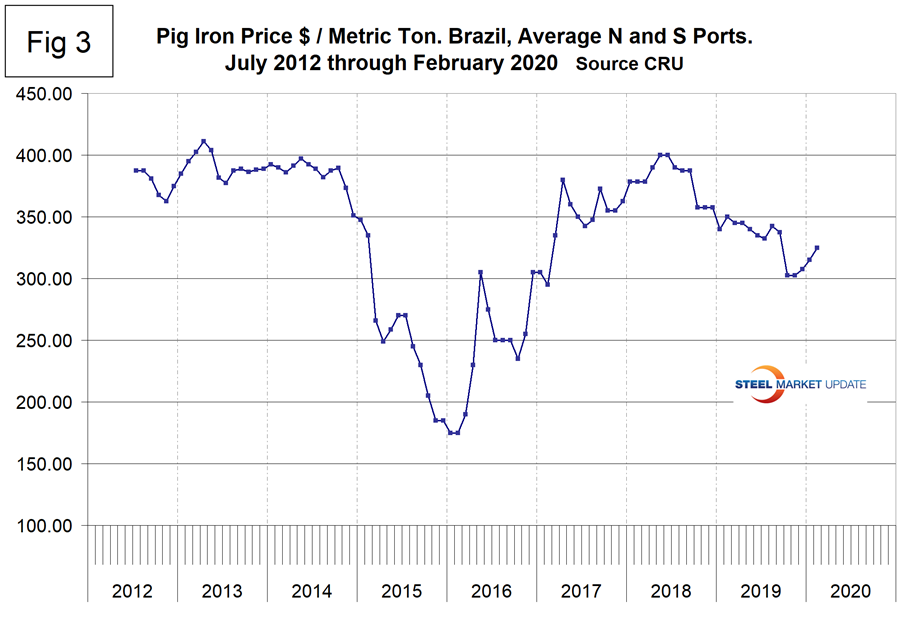
Scrap
To put this raw materials commentary into perspective, we include here Figure 4, which shows the spread between busheling in the Great Lakes region and hot rolled coil Midwest U.S. through mid-February 2019, both in dollars per net ton. The spread has ranged from a low of $284.54 in June last year to a high of $328.14 in January 2020 with a small decline to $311.07 in February. The spread is now at the top end of the range that has been relatively normal for the last 13 years.
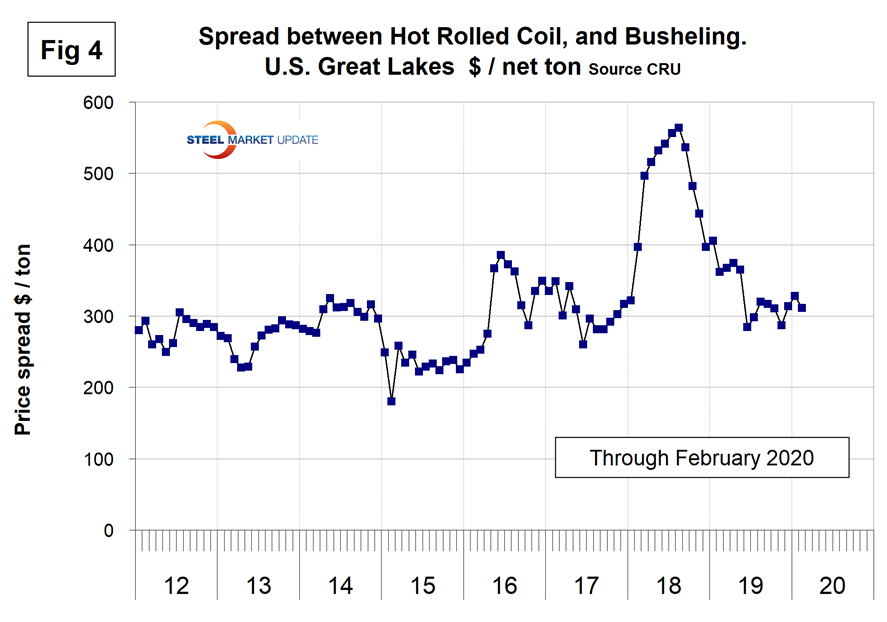
Figure 5 shows the relationship between shredded and busheling both priced in dollars per gross ton in the Great Lakes region and Figure 6 shows the actual prices. This spread was $15 in February, up from $5 in December and January.

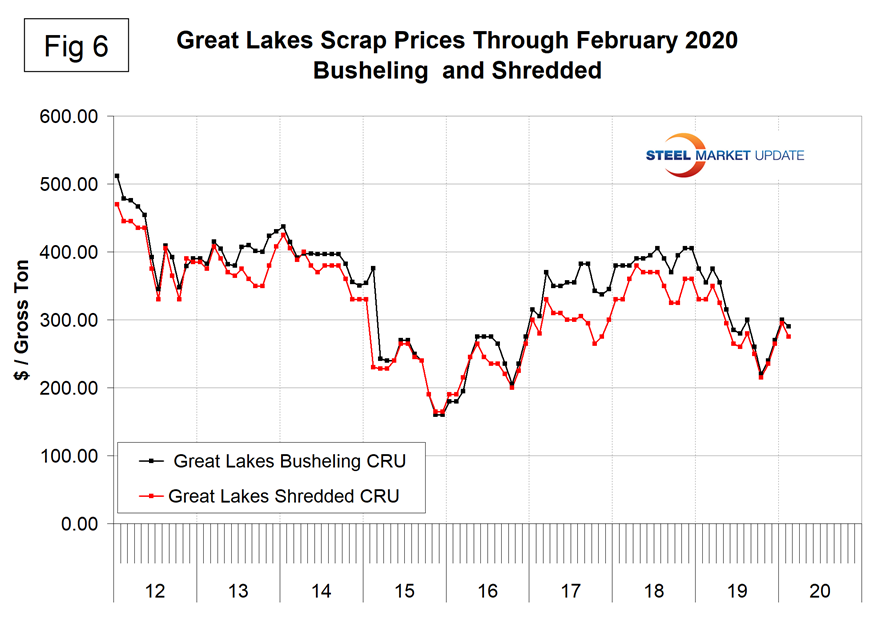
Figure 7 is a scattergram of the price of Chicago shredded and the monthly Broad Index value of the U.S. dollar as reported by the Federal Reserve. The latest data for the monthly Broad Index was January. There is a causal component to this relationship that overlays the supply demand dynamics with a negative correlation of over 72 percent.
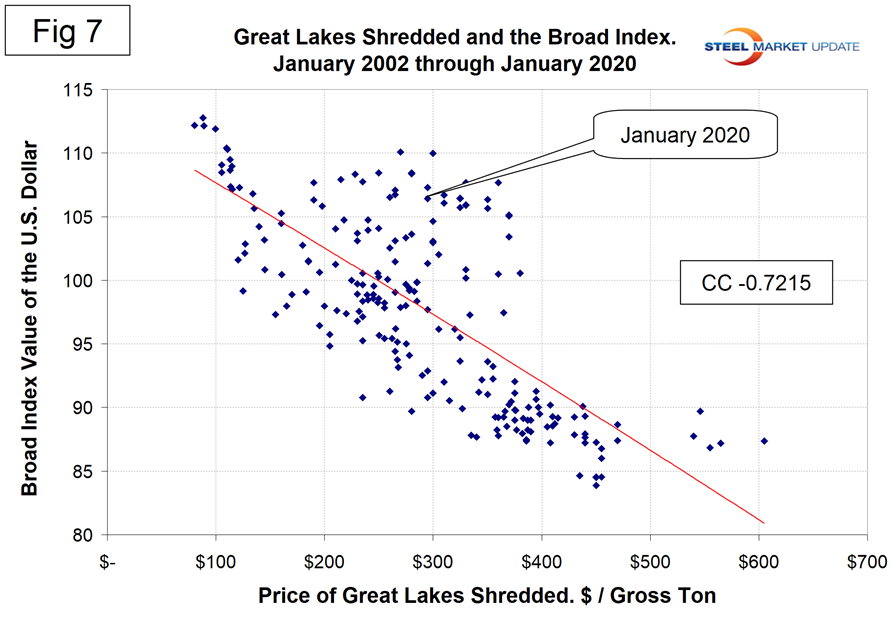
There is a long-term relationship between the prices of iron ore and scrap. Figure 8 shows the prices of 62% iron ore fines delivered North China and the price of shredded scrap in the Great Lakes region through mid-February 2020. The correlation since February 2006 has been over 79 percent. There was a very unusual divergence in these prices in 2018 that benefited the integrated producers, but that situation has now corrected leaving the EAF producers with a small advantage on a historical basis.

In the last 11 years, scrap in dollars per gross ton has been on average 3.4 times as expensive as iron ore in dollars per dry metric ton. A high ratio benefits the domestic integrated producers and a low ratio benefits the EAF producers. The ratio has been erratic since mid-2014, but at 3.1 in January and February is advantageous to the EAF producers (Figure 9).
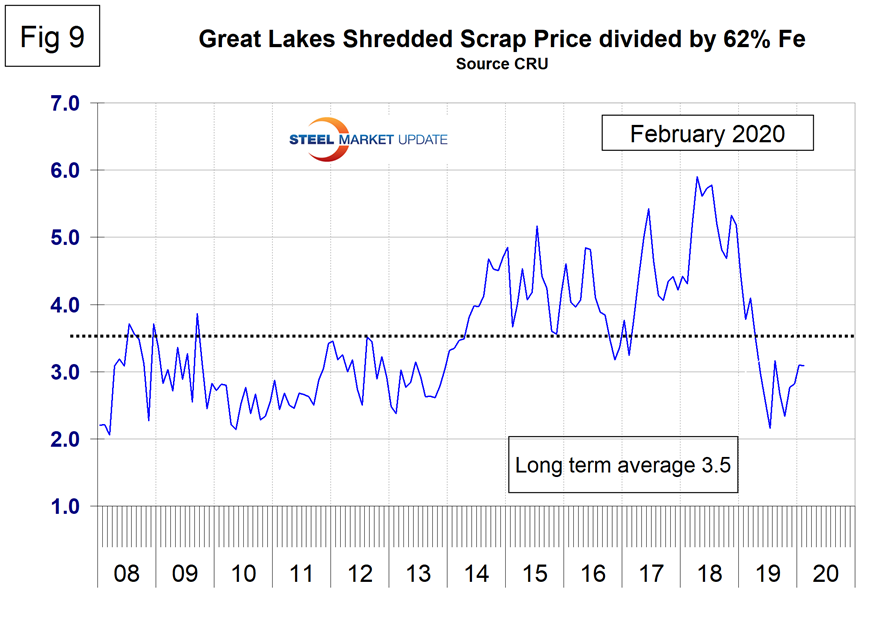
Zinc
The LME cash price for zinc mid-month is shown in Figure 10. The latest data is for Feb. 19 when the price was 97 cents per pound. The price declined from $1.12 in January, which was a return to the trend that began in March last year.
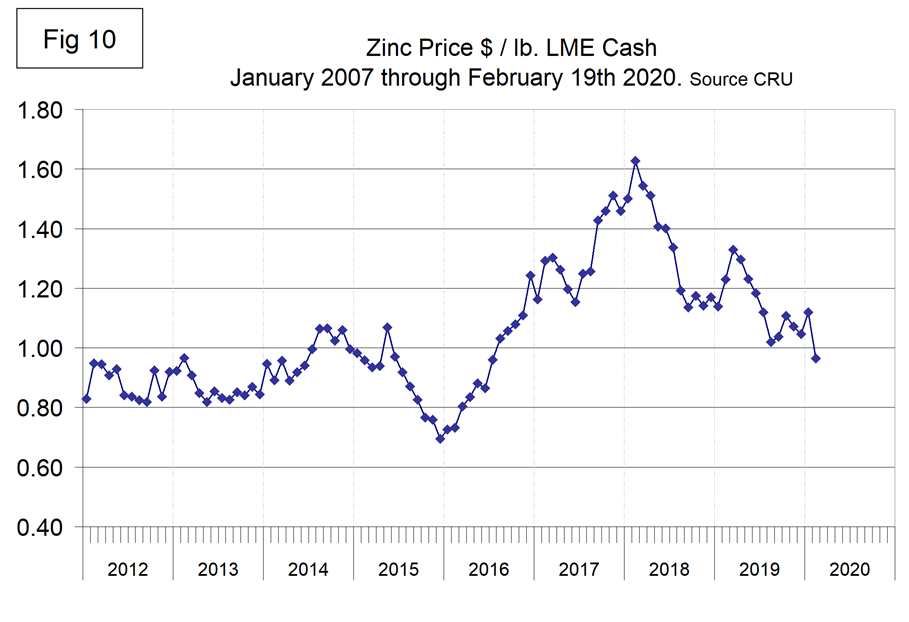
Zinc is the fourth most widely used metal in the world after iron, aluminum and copper. Its primary uses are 60 percent for galvanizing steel, 15 percent for zinc-based die castings and about 14 percent in the production of brass and bronze alloys.

Peter Wright
Read more from Peter WrightLatest in Steel Products Prices North America

Nucor slows HRC price climb with $5/ton increase
After eight weeks of double-digit price increases on hot-rolled (HR) coil, Nucor slowed the price rise this week with an increase of $5 per short ton.

Domestic CRC prices surge ahead of imports
The price spread between stateside-produced CR and imports reached its widest margin in over a year.

Evraz raises plate prices $160/ton
Evraz North America (NA) has followed Nucor and SSAB with a plate price increase of its own: up $160 per short ton (st). The increase was effective immediately for all new orders of carbon, high-strength low-alloy, and normalized and quenched-and-tempered plate products, as well as for hot-rolled coil, the steelmaker said in a letter to […]

Nucor lifts HR coil to $820/ton
Nucor has increased its consumer spot price (CSP) for hot-rolled (HR) coil for a fourth consecutive week.

Nucor pushes HR spot price to $790/ton
Nucor increased its consumer spot price (CSP) for hot-rolled (HR) coil to $790 per short ton (st) on Monday, Feb. 10 – a $15/st bump vs. last week. The Charlotte, N.C.-based company has raised its weekly CSP by $40/st over the past three weeks after maintaining tags at $750/st since Nov. 12, according to SMU’s […]
